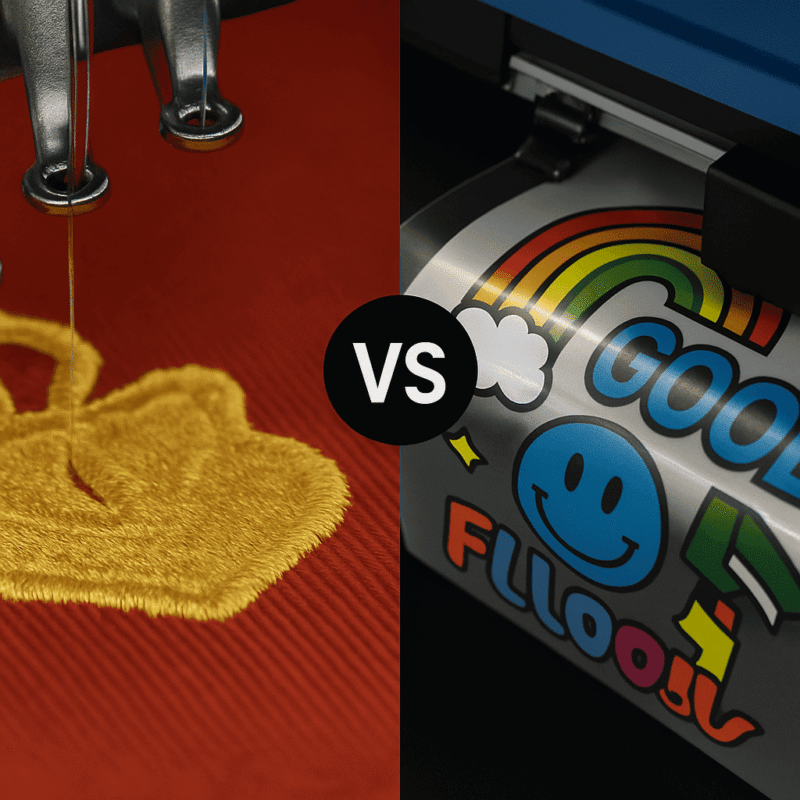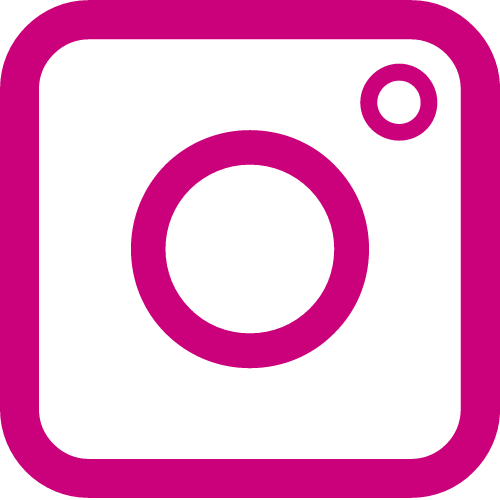Embroidery
Choosing Between DTF and Embroidery for Your Custom Gear
When planning custom apparel, the decision between Embroidery vs DTF Printing depends on key factors, including durability, design complexity, fabric type, and branding goals. While DTF is a newer, flexible print method for vibrant designs, embroidery stands out for its premium, professional finish and long-lasting quality.
Let’s compare both in depth to help you make the best decision for your custom t-shirts, hoodies, polos, jackets, uniforms, or corporate wear. At Customized-Clothing, we’re not just offering services – we’re helping your brand make a lasting statement.
Understanding the Difference Between Embroidery vs DTF Printing
Embroidery: Timeless & Professional
Embroidery uses digitised stitch files and thread to sew a design directly into the fabric. This method is ideal for logos, uniforms, workwear, and high-end apparel, offering unmatched durability and a tactile, textured look.
DTF Printing: Modern & Versatile
DTF (Direct-to-Film) printing involves printing a design directly onto a special film and then heat-transferring it to fabric. It supports full-colour, detailed artwork and works well on many fabric types. It’s an excellent option for vibrant prints and smaller production runs.
The Power of DTF Printing
- Vibrant graphics and fine detail
DTF prints can reproduce complex artwork with gradients and photographic quality, surpassing the capabilities of traditional printing methods. - Quick, small-run friendly
No setup screens, like in screen printing—just film transfers, making it ideal for one-offs or small orders. - Fabric flexibility
Works well on various fabrics, including cotton, blends, and even nylon—great for full-color tees, hoodies, and accessories.
But DTF prints may feel slightly stiff initially and lack the long-term resilience of embroidery, except for possible peeling or fading over time
DTF Printing
Pros:
- Full-colour, detailed designs with gradients and photographic effects.
- There is no screen setup, making it fast and cost-effective for small runs.
- Great on a wide range of fabrics, including cotton, polyester, blends, and dark garments.
- A smooth and soft finish that doesn’t crack easily when appropriately washed.
Cons:
- Less durable than embroidery – may peel or fade over time.
- Doesn’t offer the premium texture or stitched look that embroidery provides.
- It is not as suitable for corporate or professional uniforms.
Fabric Considerations: What Works Best?
- Lightweight t-shirts & hoodies:
- Utilize DTF printing for bold, colorful designs that can be applied across the front or back.
- Add embroidered chest logos for a premium touch.
- Polos, jackets, uniforms, caps:
- Embroidery is the best choice. It adds value and retains its quality wash after wash.
Logo Styles: Embroidered vs Printed
- Embroidered Logos:
- Best for brand recognition, employee uniforms, and professional gear.
- Adds texture, dimension, and a timeless look.
- DTF Printed Logos:
- Ideal for creative, colorful, large graphics that need attention.
- Works well for event merchandise, t-shirts, and promotional items.
Design Complexity: What Method Handles It Best?
- Embroidery excels with:
- Simple logos, monograms, text-based designs, and patch-style graphics.
- DTF excels with:
- High-detail artwork, photo-quality prints, multiple colors, and gradients.
Durability vs Cost
| Feature | Embroidery | DTF Printing |
| Durability | Normal | Medium (may wear over time) |
| Cost for small runs | Normal | Lower |
| Cost for large orders | Normal (due to stitch time) | Cost-effective |
| Detail level | Limited to gradients | Excellent for detail & color |
| Professional look | Premium | Casual |
Practical Ordering Tips
- Budget-conscious & premium brand?
→ Choose embroidery for chest logos or professional items. - Need full-color designs or detailed art?
→ Go for DTF printing. - Combo strategy:
→ Use embroidered logos on the front and DTF-printed artwork on the back for a brilliant blend. - For thick materials (jackets, polos, hats):
→ Always prioritise embroidery. - For thin materials (tees, fashion wear):
→ Opt for DTF or a mix of both, depending on branding goals.
Who Often Wins
When choosing between DTF (Direct to Film) printing and embroidery, the size of your design plays a key role. For large prints, such as full-front or back graphics, DTF printing is a better option. It offers vibrant colors, fine detail, and a smooth finish, perfect for bold, eye-catching designs.
For small logos, such as a 1-inch chest emblem or cap branding, embroidery is the clear winner. It gives a premium, textured look that’s durable and ideal for uniforms or subtle branding.
Why Customized‑Clothing Leads the Pack
- Essex/London fast-turnaround advantage: Same-day embroidery and quick DTF transfers.
- Cost-effective pricing: Embroidered text from just £0.99—great for names and small logos.
- Expert guidance: You get advice on matching design to method so you’re not overwhelmed.
Conclusion: Which Is Right for Your Brand?
Choose embroidery if:
- You want professional, long-lasting branding.
- You’re designing for jackets, polos, caps, or uniforms.
- You value texture, durability, and premium presentation.
Choose DTF Printing if:
- You need high-detail, colorful designs.
- You’re printing on lightweight fabric or doing a short run.
- You’re targeting casual, fun, or artistic merchandise.
Pro Tip: Many successful brands combine both methods. Use embroidery for small details and logos and DTF for full-color graphics. This balanced approach enhances brand impact while staying budget-conscious.
Make your next custom gear project a success now that you’re equipped with the insights to choose the perfect method and produce high-quality, eye-catching, and durable apparel that aligns with your brand vision. For long-lasting, professional apparel, embroidery is the go-to choice. For vibrant, detailed designs on smaller runs, DTF printing shines. And when you want the best of both worlds, a hybrid is your winning formula.
At Customized-Clothing, our goal is to empower you with the right choices, fast, affordable, and customised to your brand.





